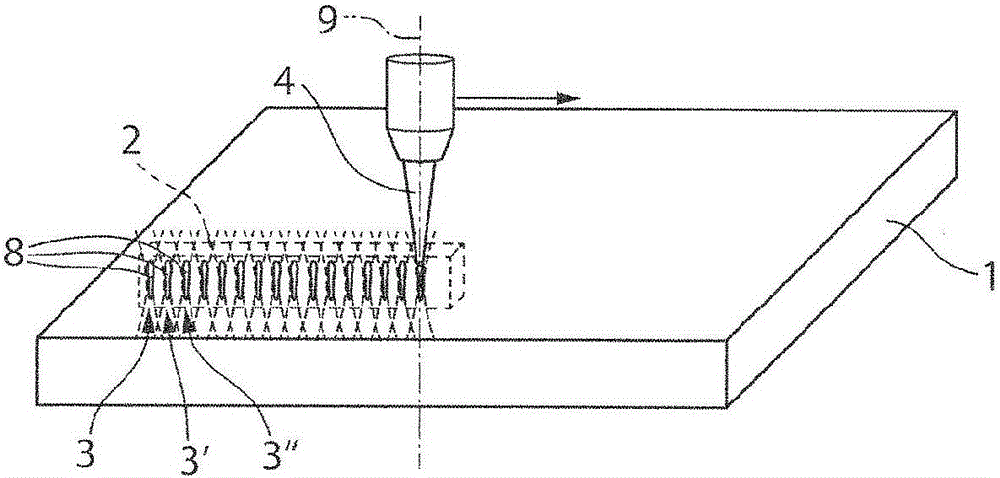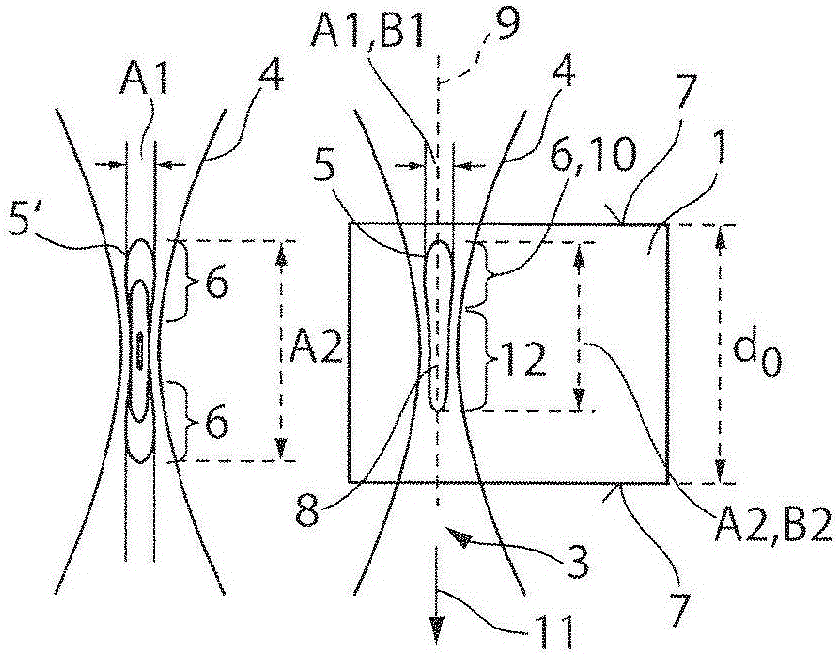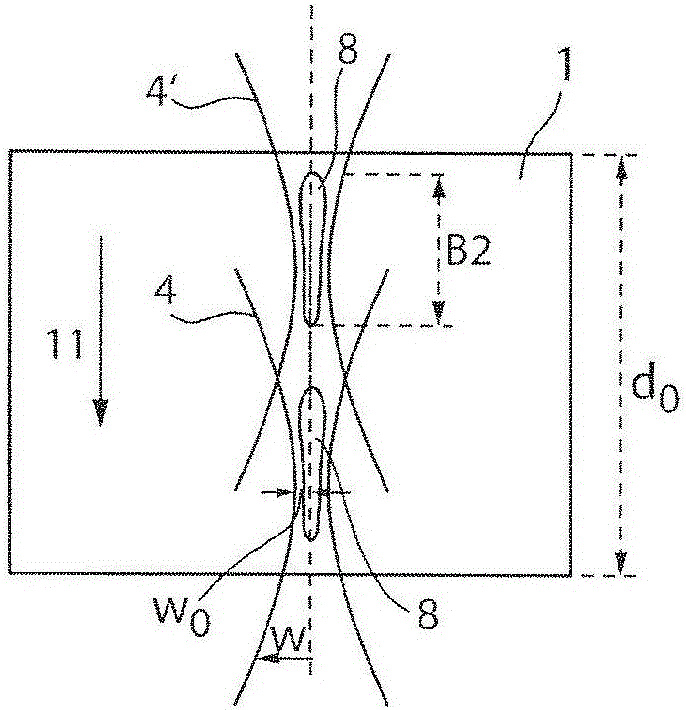Method for treating a laser-transparent substrate for subsequently separating the substrate
A laser transparent, substrate technology, applied in laser welding equipment, fine working equipment, stone processing equipment, etc., can solve the problems of unsatisfactory quality of cutting edge or separation surface, long processing time, etc., and achieve small temperature gradient , the effect of slowing down the cooling
- Summary
- Abstract
- Description
- Claims
- Application Information
AI Technical Summary
Problems solved by technology
Method used
Image
Examples
Embodiment Construction
[0036] refer to figure 1 and 2 , a method for processing a laser-transparent substrate 1 , for example chemically hardened glass, for subsequent separation of the substrate 1 along the separation region 2 is described below.
[0037] According to a first method step, the substrate interior is irradiated at the first substrate position 3 with the beam parameters of the laser beam 4 adjusted in such a way that a rod-shaped or pear-shaped constriction in the beam direction 11 is formed in the laser beam 4 A volume region 5 having a fluence or radiation intensity exceeding the threshold for producing modification (reference figure 2 ,right). In this case, the radiation intensity corresponds to the fluence of the laser beam with a defined pulse duration. In particular, the beam parameters of the laser beam 4 are adjusted such that the ratio of the maximum lateral extent A1 of the substrate-surface-side end 6 of the volume region 5 to the maximum longitudinal extent A2 of the vo...
PUM
 Login to View More
Login to View More Abstract
Description
Claims
Application Information
 Login to View More
Login to View More - R&D
- Intellectual Property
- Life Sciences
- Materials
- Tech Scout
- Unparalleled Data Quality
- Higher Quality Content
- 60% Fewer Hallucinations
Browse by: Latest US Patents, China's latest patents, Technical Efficacy Thesaurus, Application Domain, Technology Topic, Popular Technical Reports.
© 2025 PatSnap. All rights reserved.Legal|Privacy policy|Modern Slavery Act Transparency Statement|Sitemap|About US| Contact US: help@patsnap.com



